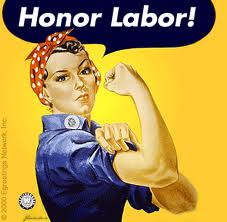 I wake up on Sunday mornings, brew a pot of coffee and tune into my favorite Sunday morning news shows like The Chris Matthews Show and Meet the Press. However, this last Sunday morning I woke up to a parade of coverage focusing exclusively on the 10th anniversary of the September 11th attacks. So, I sat on my couch all morning, sipping coffee and fought back the tears and horrible memories.
I wake up on Sunday mornings, brew a pot of coffee and tune into my favorite Sunday morning news shows like The Chris Matthews Show and Meet the Press. However, this last Sunday morning I woke up to a parade of coverage focusing exclusively on the 10th anniversary of the September 11th attacks. So, I sat on my couch all morning, sipping coffee and fought back the tears and horrible memories.
Like most Americans, I have vivid memories of those difficult days. I can tell you exactly where I was when the first news broke. I can give you a blow-by-blow accounting of my day. I couldn’t stop watching the news coverage in the weeks after Sept. 11th, and those videos of the planes crashing into the towers and people wandering around the New York streets with pictures of their fallen loved ones are just haunting. In fact, I am getting teary right now typing about it, and I have goosebumps on my arms. UGH!
So, as I watched television on Sunday morning, I found myself getting angry whenever a network would cut away from their coverage and some company’s commercial exploited 9-11 as an opportunity to sell their product. They masterfully pulled at my heart-strings and tapped into raw emotions all in the name of consumerism. Check out this Budweiser commercial to see what I mean.
Unfortunately, the beer company wasn’t the only ones doing it. Stephen Colbert did a nice job nailing a number of these culprits. Click here to check-out his comedic report.
You might be asking right about now: “What does this have anything to do with non-profit organizations, fundraising or donors?”
As I processed my thoughts and feelings in the wake of Sunday’s emotional coverage, I came to two very strong conclusions.
- This kind of marketing is manipulative, feels really yucky and makes me not want to buy those products.
- Non-profit organizations sometimes do the same kind of thing.
What?!?! Huh?!?! Where did THAT come from?
Come on! You know what I mean:
- Please sir . . . won’t you please make a contribution? Without YOUR support we will have to close our doors and throw those kids out onto the street.
- Please ma’am . . . for just the cost of that “Triple Venti Skinny Cinnamon Dulce Latte” you can feed a village of starving people for a day.”
- Please make a donation today to remember the 9-11 victims, which will allow our organization to invest in a “get out the vote” effort. (This really was a fundraising pitch. Don’t believe me? Click here!)
I know, I know . . . appealing to people’s emotions is very effective and is considered a best practice for all good fundraising and marketing campaigns. Please don’t misunderstand me. I am NOT saying that we need to strip the emotion out of our messaging, but I am saying that we need to be very careful about not crossing that line and using FEAR to motivate donors.
Knowing where that emotional line is can be difficult and different when deal with individual donors. For example, my partner detests the fundraising commercials for the ASPCA, and he swears that he will never give to that charity because he feels manipulated by them.
So, how can you and your agency know where that line is? While it is a tough question that probably doesn’t have a good answer, you better figure it out if you’re committed to a donor-centered fundraising paradigm.
The one suggestion I can offer is . . . get your donors engaged in the process. Before sending out an emotional mail appeal (or for that matter any piece aimed at cultivation, solicitation or stewardship), what would be so wrong will convening a donor focus group to review the package and provide feedback?
What are your thoughts? What does your organization do to minimize the possibility of tripping over your donors’ emotional-point-of-no-return? What is the most manipulative thing you’ve ever seen a non-profit organization do? Please use the comment box below to share your thoughts because we can all learn from each other.
Here is to your health!
Erik Anderson Owner, The Healthy Non-Profit LLC eanderson847@gmail.com http://twitter.com/#!/eanderson847 http://www.facebook.com/eanderson847 http://www.linkedin.com/in/erikanderson847







